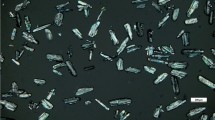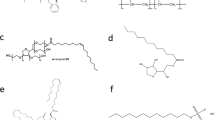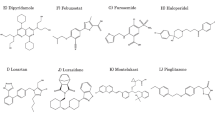Abstract
This study outlines a practical approach for assessing chemical instability by heating the drug-excipient binary mixtures or multi-excipient formulations at 75°C for 3 days before characterization. Differentiating itself from other excipient compatibility methods, our methodology necessitates a saturated aqueous slurry rather than arbitrarily fixed water content. This allows bulk and surface water in the excipient to contribute to drug degradation. The synergistic impact of surface water and elevated temperature expedites degradation kinetics, resulting in accelerated data generation. Among excipient compatibility methods available, our method is quantitative and merges with traditionally used methodologies. The devised nomograph enables extrapolation of shelf life at 20°C from experimental data obtained at 75°C. This methodology also helped identify stabilizers for the drug NVS-1 where traditional excipient compatibility programs had failed. Incorporation of monovalent salts, such as sodium/potassium chloride and sodium bicarbonate at 5% w/w, significantly enhanced the chemical stability of NVS-1, ensuring stable tablet formulations. Our hypothesis posits that stabilization is due to increased ionic strength in the slurry, which stabilizes an induced dipole within the polar NVS-1 drug. Additionally, the presence of ions in the moisture layer is anticipated to stabilize π-π stacking of two planar aromatic NVS-1 molecules. The expedited generation of experimental data allowed the identification of inorganic salts to supplement a standard excipient compatibility screening panel. Considering the economic implications of stability testing methodologies in effort, cost, and duration, a faster turnaround in chemical stability data enhances formulation selection. This ultimately facilitates the development of drug formulations with greater efficiency without delays.
Graphical Abstract











Similar content being viewed by others
References
Q1A(R2) Stability testing of new drug substances and products. ICH Guidance for industry, Geneva. 2003. https://www.fda.gov/regulatory-information/search-fda-guidance-documents/q1ar2-stability-testing-new-drug-substances-and-products. Accessed 21 Sept 2023.
Pani NR, Nath LK, Acharya S. Compatibility studies of nateglinide with excipients in immediate release tablets. Acta Pharm. 2011;561:237–47.
Malan CEP, de Villiers MM, Lötter AP. Evaluation of compatibility of tablet excipients with albendazole and closantel using DSC and HPLC. Drug Dev and Ind Pharm. 1997;23:533–7.
Malan CEP, de Villiers MM, Lötter AP. Application of differential scanning calorimetry and high performance liquid chromatography to determine the effects of mixture composition and preparation during the evaluation of niclosamide-excipient compatibility. J Pharm Biomed Anal. 1997;15:549–57.
Araújo AAS, Storpirtis S, Mercuri LP, Carvalho FMS, Filho MDS, Matos JR. Thermal analysis of the antiretroviral zidovudine (AZT) and evaluation of the compatibility with excipients used in solid dosage forms. Int J Pharm. 2003;260:303–14.
Tomassetti M, Catalani A, Rossi V, Vecchio S. Thermal analysis study of the interactions between acetaminophen and excipients in solid dosage forms and in some binary mixtures. J Pharm Biomed Anal. 2005;37:949–55.
Thumma S, Repka MA. Compatibility studies of promethazine hydrochloride with tablet excipients by means of thermal and non-thermal methods. Pharmazie. 2009;64:183–8.
Late SG, Banga AK. Thermal and non-thermal methods to evaluate compatibility of granisetron hydrochloride with tablet excipients. Pharmazie. 2008;63:453–8.
Laszcz M, Kosmacinska B, Smigielska B, Glice M, Maruszak W, Groman A, et al. Study on compatibility on imatinib mesylate with pharmaceutical excipients. J Therm Anal Calorim. 2007;88:305–10.
Marini A, Berbenni V, Moioli S, Bruni G, Cofrancesco P, Margheritis C, et al. Drug-excipient compatibility studies by physico-chemical techniques – the case of indomethacin. J Therm Anal Calorim. 2003;73:529–45.
Sims JL, Carreira JA, Carrier DJ, Crabtree SR, Easton L, Hancock SA, et al. A new approach to accelerated drug-excipient compatibility testing. Pham Dev Technol. 2003;8(2):119–26.
Monajjemzadeh F, Hassanzadeh D, Valizadeh H, Siahi-Shadbad MR, Mojarrad JS, Robertson TA, et al. Compatibility studies of acyclovir and lactose in physical mixtures. Eur J Pharm Biopharm. 2009;73:404–13.
Schmitt EA, Peck K, Sun Y, Geoffroy J-M. Rapid, practical and predictive excipient compatibility screening using isothermal microcalorimetry. Thermochim Acta. 2001;380:175–83.
Lubach JW, Hau J. Solid-State NMR investigation of drug-excipient interactions and phase behavior in indomethacin-eudragit E amorphous solid dispersions. Pharm Res. 2018;35(3):65.
Song Y, Yang X, Chen X, Nie H, Byrn SR, Lubach JW. Investigation of drug–excipient interactions in lapatinib amorphous solid dispersions using solid-state NMR spectroscopy. Mol Pharm. 2015;12(3):857–66.
Brusač E, Jeličić M-L, Cvetnić M, Amidžić Klarić D, Nigović B, Mornar A. Comprehensive approach to compatibility testing using chromatographic, thermal and spectroscopic techniques: evaluation of potential for a Monolayer Fixed-dose combination of 6-mercaptopurine and folic acid. Pharmaceuticals (Basel). 2021;14(3):274.
da Silva EP, Pereira MAV, de Barros Lima IP, Barros Lima NGP, Barbosa EG, Soares Aragao CF, et al. Compatibility study between atorvastatin and excipients using DSC and FTIR. J Therm Anal Calorim. 2016;123:933–9.
Blessy M, Patel RD, Prajapati PN, Agrawal YK. Development of forced degradation and stability indicating studies of drugs - a review. J Pharm Anal. 2014;4(3):159–65.
Alsante KM, Martin L, Baertschi S. A stress testing benchmarking study. Pharm Technology. 2003;27:60–72.
Crowley PJ. Excipients as stabilizers. Pharm Sci Technol Today. 1999;2(6):237–43.
Callahan JC, Cleary GW, Elefant M, Kaplan G, Kensler T, Nash RA. Equilibrium moisture content of pharmaceutical excipients. Drug Dev and Ind Pharm. 1982;8(3):355–69.
Yoshioka S, Aso Y, Terao T. Effect of water mobility on drug hydrolysis rates in gelatin gels. Pharm Res. 1992;9:607–12.
Aso Y, Sufang T, Yoshioka S, Kojima S. Amount of mobile water estimated from 2H spin-lattice relaxation time, and its effects on the stability of cephalothin in mixtures with pharmaceutical excipients. Drug Stab. 1997;1(4):237–42.
Tong P, Zografi G. Effects of water vapor absorption on the physical and chemical stability of amorphous sodium indomethacin. AAPS PharmSciTech. 2004;5(2):9–16.
Ahlneck C, Zografi G. The molecular basis of moisture effects on the physical and chemical stability of drugs in the solid state. Int J Pharm. 1990;62(2–3):87–95.
Hancock BC, Zografi G. The relationship between the glass transition temperature and the water content of amorphous pharmaceutical solids. Pharm Res. 1994;11:471–7.
Chemburkar PB, Smyth RD, Buehler JD, Shah PB, Joslin RS, Polk A, et al. Correlation between dissolution characteristics and absorption of methaqualone from solid dosage forms. J Pharm Sci. 1976;65(4):529–33.
Horhota ST, Burgio J, Lonski L, Rhodes CT. Effect of storage at specified temperature and humidity on properties of three directly compressible tablet formulations. J Pharm Sci. 1976;65(12):1746–9.
Waterman KC, MacDonald BC. Package selection for moisture protection for solid, oral drug products. J Pharm Sci. 2010;99(11):4437–52.
Veronica N, Heng PWS, Liew CV. Relative humidity cycling: implications on the stability of moisture-sensitive drugs in solid pharmaceutical products. Mol Pharm. 2023;20(2):1072–85.
Teraoka R, Otsuka M, Matsuda Y. Effects of temperature and relative humidity on the solid-state chemical stability of ranitidine hydrochloride. J Pharm Sci. 1993;82(6):601–4.
Genton D, Kesselring UW. Effect of temperature and relative humidity on nitrazepam stability in solid state. J Pharm Sci. 1977;66(5):676–80.
Kontny MJ, Grandolfi GP, Zografi G. Water vapor sorption of water-soluble substances: studies of crystalline solids below their critical relative humidities. Pharm Res. 1987;4(2):104–12.
Singh S, Bhutani H, Mariappan TT, Kaur H, Bajaj M, Pakhale S. Behavior of uptake of moisture by drugs and excipients under accelerated conditions of temperature and humidity in the absence and the presence of light. 1. Pure anti-tuberculosis drugs and their combinations. Int J Pharm. 2002;245(1–2):37–44.
Tingstad J, Dudzinski J, Lachman L, Shami E. Simplified method for determining chemical stability of drug substances in pharmaceutical suspensions. J J Pharm Sci. 1973;62(8):1361–3.
McAlister E, Kearney MC, Martin EL, Donnelly RF. From the laboratory to the end-user: a primary packaging study for microneedle patches containing amoxicillin sodium. Drug Deliv Transl Res. 2021;11(5):2169–85.
Maulding HV, Zoglio MA, Pigois FE, Wagner MP. Pharmaceutical heterogeneous system. IV. A kinetic approach to the stability screening of solid dosage forms containing aspirin. J Pharm Sci. 1969;58(11):1359–62.
Kesavan JG, Peck GE. Solid-Sate stability of theophylline anhydrous in theophylline anhydrous-polyvinylpyrrolidone physical mixtures. Drug Dev Ind Pharmacy. 1996;22(3):189–99.
Thakur AB, Morris K, Grosso JA, Himes K, Thottathil JK, Jerzewski RL, et al. Mechanism and kinetics of metal ion-mediated degradation of fosinopril sodium. Pharm Res. 1993;10:800–9.
Kornblum SS, Zoglio MA. Pharmaceutical heterogeneous systems I. Hydrolysis of aspirin in combination with tablet lubricants in an aqueous suspension. J Pharm Sci. 1967;56(12):1569–75.
Ahlneck C, Waltersson JO, Lundgren P. Difference in effect of powdered and granular magnesium stearate on the solid state stability of acetylsalicylic acid. Acta Pharm Technol. 1987;33(1):21–6.
Byrn SR, Xu W, Newman AW. Chemical reactivity in solid-state pharmaceuticals: formulation implications. Adv Drug Deliv Rev. 2001;48(1):115–36.
Jackson K, Young D, Pant S. Drug-excipient interactions and their affect on absorption. Pharm Sci Technol Today. 2000;3(10):336–45.
Santos I. Drug substance solid-state characterization and stability. In: Mazzo DJ, editor. International stability testing. 1st ed. Boca Raton: CRC Press; 1998. p. 352.
Rácz I (István). Drug Formulation. Chichester: John Wiley; 1989.
Koshy AT, Troup AE, Duvall RN, Conwell RC, Shankle LL. Acetylation of acetaminophen in tablet formulations containing aspirin. J Pharm Sci. 1967;56(9):1117–21.
Simonelli AP, Dresback DS. Principles of formulation of parenteral dosage forms (Stability considerations). In: Francke DE, Whitney HAK, editors. Perspectives in clinical pharmacy. Hamilton, Illinois: Drug Intelligence Publications; 1972. p. 408–12.
Carstensen JT. Effect of moisture on the stability of solid dosage forms. Drug Dev Ind Pharm. 1988;14(14):1927–69.
Gu L, Strickley RG, Chi LH, Chowhan ZT. Drug-excipient incompatibility studies of the dipeptide angiotensin-converting enzyme inhibitor, moexipril hydrochloride: dry powder vs wet granulation. Pharm Res. 1990;7(4):379–83.
Serajuddin ATM, Thakur AB, Ghosal RN, Fakes MG, Ranadive SA, Morris KR, et al. Selection of solid dosage form composition through drug-excipient compatibility testing. J Pharm Sci. 1999;88(7):696–704.
Jain S, Shah RP. Drug-excipient compatibility study through a novel vial-in-vial experimental setup: a benchmark study. AAPS PharmSciTech. 2023;24(5):117.
Wyttenbach N, Birringer C, Alsenze J, Kuentz M. Drug-excipient compatibility testing using a high-throughput approach and statistical design. Pham Dev Technol. 2005;10(4):499–505.
Higuchi WI, Parrott EL, Wurster DE, Higuchi T. Investigation of drug release from solids II. Theoretical and experimental study of influences of bases and buffers on rates of dissolution of acidic solids. J Am Pharm Assoc. 1958;47(5):376–83.
Mooney KG, Mintun MA, Himmelstein KJ, Stella VJ. Dissolution kinetics of carboxylic acids II: effect of buffers. J Pharm Sci. 1981;70(1):22–32.
Mooney KG, Mintun MA, Himmelstein KJ, Stella VJ. Dissolution kinetics of carboxylic acids I: effect of pH under unbuffered conditions. J Pharm Sci. 1981;70(1):13–22.
Serajuddin ATM, Jarowski CI. Effect of diffusion layer pH and solubility on the dissolution rate of pharmaceutical acids and their sodium salts. II: salicylic acid, theophylline, and benzoic acid. J Pharm Sci. 1985;74(2):148–54.
Farag Badawy SI, Hussain MA. Microenvironmental pH modulation in solid dosage forms. J Pharm Sci. 2007;96(5):948–59.
Kararli TT, Needham TE, Seul CJ, Finnegan PM. Solid-state interaction of magnesium oxide and ibuprofen to form a salt. Pharm Res. 1989;6(9):804–8.
Czaja J, Mielck JB. Solid-state degradation kinetics of nitrazepam in the presence of colloidal silica. Pharm Acta Helv. 1982;57(5–6):144–53.
Piane MD, Corno M. Can mesoporous silica speed up degradation of benzodiazepines? Hints from quantum mechanical investigations. Materials (Basel). 2022;15(4):1357.
Johansen H, Moeller N. Solvent deposition of drugs on excipients II: interpretation of dissolution, adsorption and absorption characteristics of drugs. Arch Pharm Chem. 1977;5:33–42.
Tischinger-Wagner H, Endres W, Rupprecht H, Weingart A. Oxidativer abbau von linolsäuremethylester in suspensionen anorganischer hilfsstoffe. Teil 1: autoxidation in Gegenwart von Kieselsäureprodukten und Aluminiumoxid [Oxidative degradation of linoleic acid methyl ester in suspensions of inorganic excipients. 1. Auto-oxidation in the presence of silicic acid products and aluminum oxide]. Pharmazie. 1987;42(5):320–4.
Yamamura T, Ohta T, Taira T, Ogawa Y, Sakai Y, Moribe K, et al. Effects of automated external lubrication on tablet properties and the stability of eprazinone hydrochloride. Int J Pharm. 2009;370(1–2):1–7.
Stanisz B, Regulska K, Kania J, Garbacki P. Effect of pharmaceutical excipients on the stability of angiotensin-converting enzyme inhibitors in their solid dosage formulations. Drug Dev Ind Pharm. 2013;39(1):51–61.
Riegelman S. The effect of surfactants on drug stability. J Am Pharm Assoc. 1960;49(6):339–43.
Hincal AA, Long DF, Repta AJ. Cis-platin stability in aqueous parenteral vehicles. J Parenter Drug Assoc. 1979;33(3):107–16.
Nash RA, Haeger BE. Zeta potential in the development of pharmaceutical suspensions. J Pharm Sci. 1966;55(8):829–37.
Gallardo V, Morales ME, Ruiz MA, Delgado AV. An experimental investigation of the stability of ethylcellulose latex: correlation between zeta potential and sedimentation. Eur J Pharm Sci. 2005;26(2):170–5.
Timmer BJJ, Mooibroek TJ. Intermolecular π-π stacking interactions made visible. J Chem Educ. 2021;98(2):540–5.
Huang H, Zhang J, Zhang T, Zhang S. Thermal stability improved by π-π stacking interactions: synthesis, crystal structure and thermal decomposition of sodium nitroformate. J Wuhan Univ Technol-Mat Sci Edit. 2014;39:488–91.
Sao S, Naskar S, Mukhopadhyay N, Das M, Chaudhuri D. Assisted π-stacking: a strong synergy between weak interactions. Chem Comm. 2018;54(86):12186–9.
Li X, Braxton B, Stuto M, Chien D-S, Sun X, Matharu A. Determination of optimal excipient microenvironmental pH to enhance chemical stability of a highly unstable API in formulation development. Annual AAPS meeting; Orlando, FL, Oct 26, 2015.
Acknowledgements
The authors dedicate this work to late Professor Anthony (Tony) P. Simonelli (Jun 28th 1924-Jul 14th 2023) whose profound influence and guidance provided by classroom instructions and publications served as the foundation for this 3-day rapid testing methodology. The authors acknowledge Dr. Keith Flood, Dr. Thomas Eskay for assistance with design of experiments and material characterization, and Dr. Anup Ray for helpful discussions on the stabilization mechanism of NVS-1 in presence of salts. The authors also appreciate Dr. Mahendra Patel for the helpful insights and suggestions.
Author information
Authors and Affiliations
Contributions
The authors have approved the contents of this manuscript and are accountable for the accuracy of the work presented.
YC and ASM: generation and curation of experimental data, its interpretation, drafting of the manuscript, and final approval of the publication.
SSD: writing/revising of content, data interpretation, editing and final approval of the version to be published.
Corresponding author
Ethics declarations
Competing Interests
The authors declare no competing interests.
Additional information
Publisher's Note
Springer Nature remains neutral with regard to jurisdictional claims in published maps and institutional affiliations.
Rights and permissions
Springer Nature or its licensor (e.g. a society or other partner) holds exclusive rights to this article under a publishing agreement with the author(s) or other rightsholder(s); author self-archiving of the accepted manuscript version of this article is solely governed by the terms of such publishing agreement and applicable law.
About this article
Cite this article
Matharu, A.S., Dhareshwar, S.S. & Cao, Y.(. A Rapid 3-Day Excipient Screening Methodology and its Application in Identifying Chemical Stabilizers for Solid Formulations with Mixed Mechanisms of Degradation. AAPS PharmSciTech 25, 12 (2024). https://doi.org/10.1208/s12249-023-02730-5
Received:
Accepted:
Published:
DOI: https://doi.org/10.1208/s12249-023-02730-5




